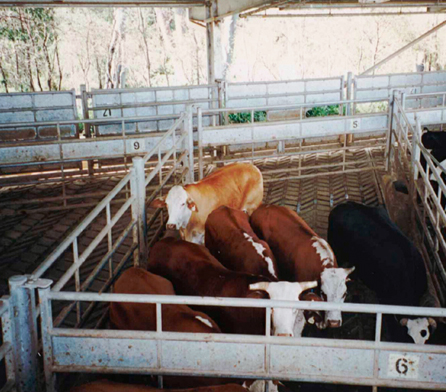Teys Bros cooling and drying process
| Client: | Teys Brothers (Holdings) Pty Ltd |
| Location: | Beenleigh, Queensland, Australia |
| Scope overview: | Devise a cooling and drying cycle that could occur within the one-hour window |
| Facility: | Cooling and Drying room |
Project Description
Innovation cuts cooling and drying times for Teys Brothers (Holdings) Pty Ltd
CLIENT
Since their inception in 1946, Teys Brothers (Holdings) Pty Ltd, one of Australia’s largest meat processing companies, has maintained a focus on innovation and consequently has paved the way for the Australian beef industry.
OBJECTIVES
Teys contracted Wiley to add a new boning room and associated equipment to its facility at Beenleigh.
Very tight control over temperature is essential for production in a facility of this type and optimal operating temperature has to be restored after cleaning and before each new production cycle.
At the Teys facility, a production cycle consists of two continuous shifts from 5.30am one day to 1.30am the following day, succeeded by a four-hour cleaning cycle.
The cleaning cycle creates steam that must be dried off before the room is cooled to optimal operating temperature.
The drying and cooling process must occur within a one-hour period before the next production cycle starts.
The critical element of the project was devising a cooling and drying cycle that could occur within the one-hour window, with due consideration to safety, access and equipment maintenance.
CHALLENGES
- Devising a cooling and drying cycle that would return the facility to optimal operating temperature within one hour after cleaning
- Determining a more practical location for the replacement of the facility’s air socks than the floor inside the boning room
- Addressing equipment access, safety and ease of maintenance as key design parameters.
SOLUTIONS
Wiley developed a cooling and drying process with the following features:
- A complex system of five extraction fans that open during the cleaning cycle and allow fresh air to enter the room, bypassing the sock system. This approach keeps the socks dry and rapidly exhausts the steaming air from the rooms
- A rapid cool mode, which is used after hot water cleaning to bring the room to operating temperature. During application of this mode, the extraction fans are sequenced to distribute the cool air from the air handling units and assist in drying, and the refrigeration is turned on to blow drier air into the room
- Insulated external doors that close automatically once the room is clear of moist air and the extraction fans shut down. At this stage, the sock system is used to return air to the room, which gives maximum drying effect in the available time.
Typically, sock systems are located above the boning equipment, which makes removing the socks impractical.
Instead of using this approach, Wiley developed a new fixing method for the air socks so that they could be replaced from inside the air duct, and increased the size of the air ducts to give access to the fixings.
The addition of doorways to the ceiling space further enhanced access for maintenance.
Wiley also:
- Mounted the air handling units on the trafficable ceiling for better access and maintenance
- Installed a monorail and hatch to make it easier to remove the main fan and motor in the air handling units
- Used a closed loop glycol system as the cooling medium to remove the danger of ammonia leaks from the work environment.
RESULTS
The successful installation of a new boning room and process equipment within a very short timeframe, with minimal disruption to existing operations, and with significant enhancements to the facility’s overall safety, operability and reliability.



